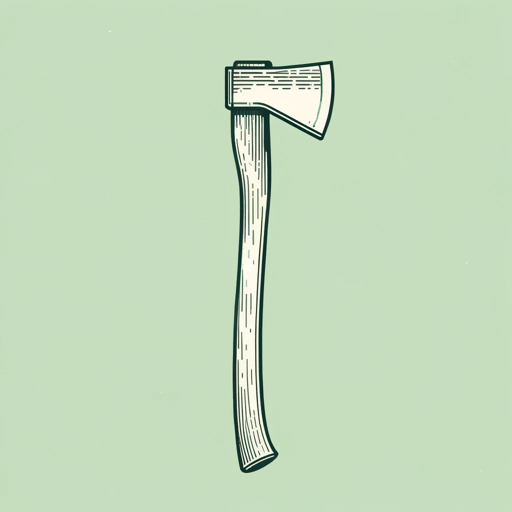35 pages • 1 hour read
Gary PaulsenSoldiers Heart: Being the Story of the Enlistment and Due Service of the Boy Charley Goddard in the First Minnesota Volunteers
Fiction | Novella | YA | Published in 1998A modern alternative to SparkNotes and CliffsNotes, SuperSummary offers high-quality Study Guides with detailed chapter summaries and analysis of major themes, characters, and more.
Summary and Study Guide
Overview
Gary Paulsen’s young adult novel Soldier’s Heart: Being the Story of the Enlistment and Due Service of the Boy Charley Goddard in the First Minnesota Volunteers highlights a young soldier’s experience in the Civil War. Many of the novel’s plot events are based on historical records, as is the novel’s main character Charley, who is based on the actual soldier Charley Goddard. However, Paulsen takes liberties within the story and notes that parts of the novel are fictional.
Paulsen shows the toll the bloody Civil War conflict took on soldiers emotionally. Although PTSD was not recognized or treated in the 1800s, soldiers still experienced it, and soldiers who struggled with PTSD-like symptoms after returning from combat were said to have “soldier’s heart.” The novel was published in 1998, and this guide refers to the 2000 Laurel Leaf edition.
Content Warning: This guide discusses topics including graphic violence, death, slavery, war, and suicide as depicted in Soldier’s Heart.
Plot Summary
Charley leaves his hometown of Winona, Minnesota in June 1861 to volunteer for the Union Army. He is only 15, legally too young to enlist, but he travels to Fort Snelling, where no one knows him or his age. Charley’s mother reluctantly lets him leave; everyone thinks the war will last only a month or two and expects the Union forces to secure a swift victory over the Rebels. Training at Fort Snelling is somewhat boring for Charley. Many of the officers are inexperienced, and the men are made to do repetitive drills. He also finds it difficult to be accurate with his musket during shooting practice. As the weeks drag on, the men wonder if they will ever be called to battle.
After a few months, Charley’s regiment—the First Minnesota Volunteers—are summoned to Virginia. Their journey involves several legs—some by steamboat and others by train, both of which Charley experiences for the first time. Seeing poor farms as they enter Confederate states, Charley thinks the war will be short indeed; how could people living in poor conditions put up a fight? Charley also sees an enslaved person and slave owner for the first time on the journey. In Charley’s mind, however, the Civil War is primarily about stopping secessionists and keeping the Union intact and free of rebellion; to him, slavery seems like a secondary cause for the fighting.
Charley’s first battle is the Battle of Bull Run. He is overcome by shock and fear as he watches fellow soldiers die. Unable to think straight, he forgets to fire his weapon. He wants to run, but he remains with his unit, and they are eventually told to retreat. They return the next day to find that the Rebels are gone.
Next, Charley’s unit camps in Washington, D. C. where they continue drills and protect the city. Weeks pass before the men are eventually called to another battle. Charley knows what to expect this time, and an instinct for self-preservation overtakes him. As the battle ends, he finds that a new soldier named Nelson suffered a stomach wound, a death sentence. At Nelson’s request, Charley loads Nelsons rifle, and Nelson shoots himself, choosing to end his life quickly.
Charley’s unit camps for another three months. Disease and rumors run rampant through the camp, and Charley focuses his mind and energy on maintaining his campsite and weapon. He withdraws from his fellow soldiers, not wanting to get to know men that will likely die in battle. As winter comes, food is scarce, and Charley is ordered to kill horses so that the wounded men in the hospital can have meat. Charley’s unit is summoned to another battle, and he can hear the gunfire from miles away as they approach. The unit faces two groups of Confederate soldiers; the first is small, and the Union soldiers quickly defeat them. The second group, however, greatly outnumbers Charley’s regiment, and they suffer heavy casualties.
In July 1863, Charley fights in the Battle of Gettysburg. The Union Army has an ideal position on a hillside for the battle, and Charley is stationed in a sheltered location so that he can shoot without vulnerability to enemy fire. Eventually, however, the First Minnesota volunteers are summoned to emerged from their sheltered positions and fight hand-to-hand with the oncoming Confederate line.
Four years later, Charley walks with a cane towards the river in Winona, Minnesota, for a solitary picnic. He is only 21 years old, but his body moves like that of an old man because of injuries he suffered in battle. As he sits by the river, he places a Confederate revolver beside him and fights memories from the war. He contemplates suicide, thinking that joining his friends who died would be easier than living with pain and memories from battle.
Related Titles
By Gary Paulsen

Brian's Hunt
Gary Paulsen

Brian's Return
Gary Paulsen

Brian's Winter
Gary Paulsen

Dogsong
Gary Paulsen

Guts: The True Stories Behind Hatchet and the Brian Books
Gary Paulsen

Harris and Me: A Summer Remembered
Gary Paulsen

Hatchet
Gary Paulsen

How Angel Peterson Got His Name
Gary Paulsen

Lawn Boy
Gary Paulsen

Masters of Disaster
Gary Paulsen

My Life in Dog Years
Gary Paulsen

Nightjohn
Gary Paulsen

Northwind
Gary Paulsen

The Crossing
Gary Paulsen

The Monument
Gary Paulsen

The River
Gary Paulsen

The Transall Saga
Gary Paulsen

The Voyage of the Frog
Gary Paulsen

The Winter Room
Gary Paulsen
Tracker
Gary Paulsen

